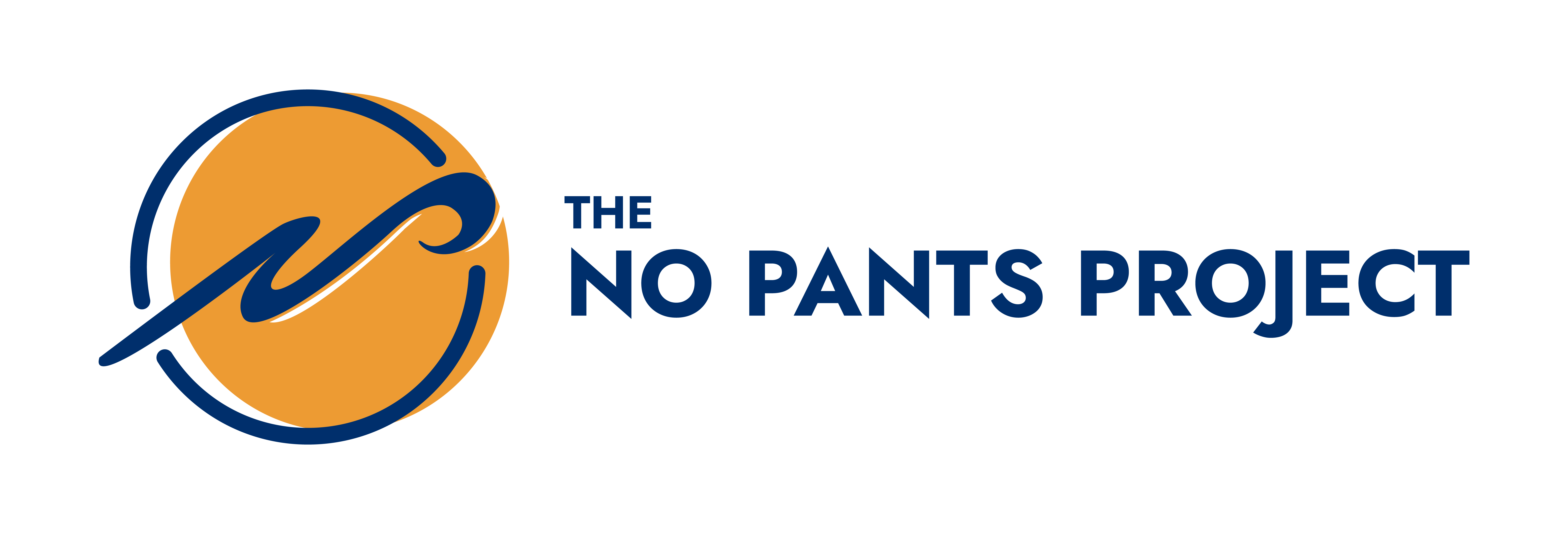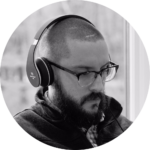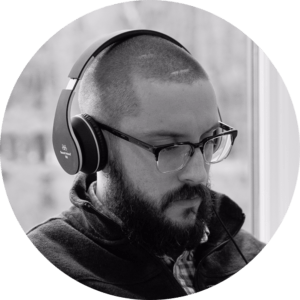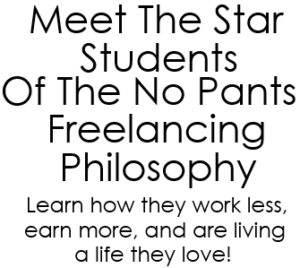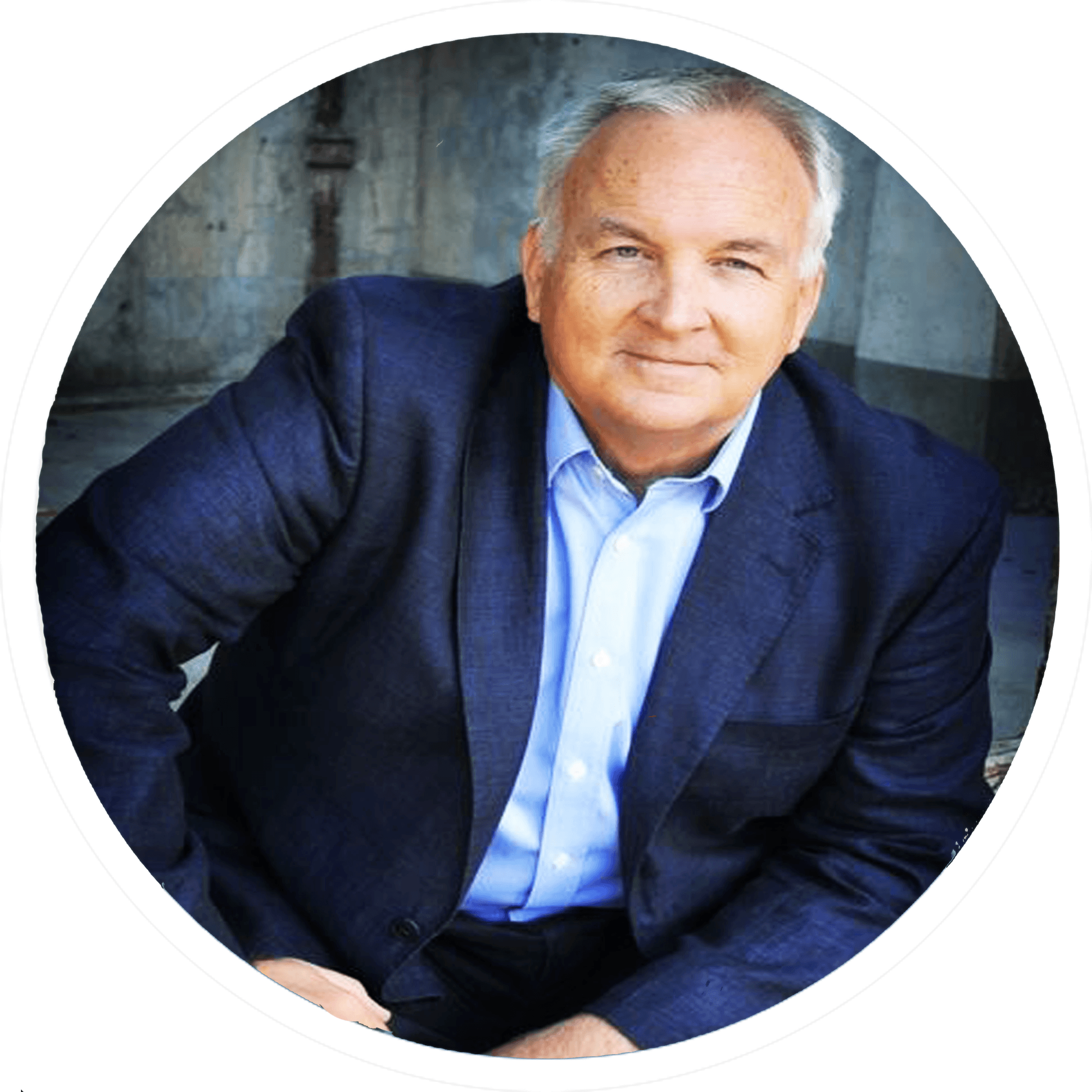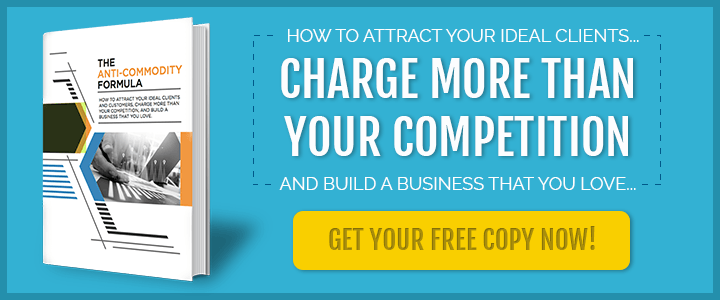Listen to this Podcast:
Listen On Anchor Listen On Spotify Listen On Apple Podcasts Listen On Google Podcasts
SUMMARY
- For some business owners, hustling, hustling, hustling is the way to go. But if you’ve been working your fingers to the bone and thinking to yourself that there has got to be a better way, then this episode is for you.
- Many of us struggle to maintain a healthy work-life balance. Fortunately, you don’t have to be overworked, overbooked, or compromise your well-being in order to run a successful business. As Mike Shreeve discovered some years ago, there are three ways to increase your earnings without taking on more clients, charging your clients more, or doing any additional marketing.
- After applying these three core ideas to his business, Mike went from working over 60 hours a week to working every other week for about 20 hours during that week. Not only that, he was also able to gradually increase his income month over month, despite cutting down his workload.
- The first way to give yourself a raise in your own business is to develop the habit of concise thinking. Another term for concise thinking is extreme focus.
- Many freelancers approach business in a reactionary state, i.e., they wake up, check their email, and react to the things that are happening to them. What you want to do instead is to work from a concise plan that has been specifically designed to give you the biggest impact for the smallest effort.
- Good clients don’t care how long it takes you to complete what they’re paying you to do; they care about the end result.
- Journaling is crucial to developing concise thinking or extreme focus. Because when you think on paper, you can review your thinking. You are then able to spot and slough off all the non-essential thoughts, allowing you to be more efficient. You could probably even cut your working time in half!
- The second way to give yourself a raise is to shift to results-based thinking. It’s important to get out of the employee mentality, which basically says, “I get paid because I’m here, not because of what I deliver.”
- When you focus on results, you move away from all the superfluous things that are holding you back. When you focus on results, you work less, thereby becoming more efficient.
- Recommended reading: Why We Sleep: Unlocking the Power of Sleep and Dreams by Matthew Walker.
- The third way to give yourself a raise is to make use of templates or frameworks. A framework is a mental exercise that generates the result you’re looking for every time you follow it.
- For example, if you’re a writer, you want to have a template that will help you outline an entire long-form blog post in 10-15 minutes, so that you’re not taking three days to write something that should have taken only two hours.
- When you have a framework, you know that at the end of the process, you are able to deliver the result your client wants, without having to work harder than you need to.
HOT NEWS & DEALS
- Free Training! The No Pants Workshop
For anyone serious about owning their own successful (yet flexible) business. Learn how to quit your job and leverage your talents to live the ultimate freelancer freedom lifestyle! Register now for this free training to learn the 3-step plan to Full-Time (Profitable) Freelancing. - Free Client-Getting Email Templates For Freelancer Writers!
If you are a freelance writer (or you’d like to be!), download these FREE client-getting email templates. Mike has used these EXACT templates to land monthly retainers for his writing services, get featured in top shelf magazines (as a nobody), and land some of the biggest names in his dream industry as clients without spending a penny in advertising or marketing… - Download ‘The Anti-Commodity Formula’ Workbook!
Learn how to attract your ideal clients and customers, charge more than your competition, and build a business from a home that you love.
INSPIRATIONAL QUOTES
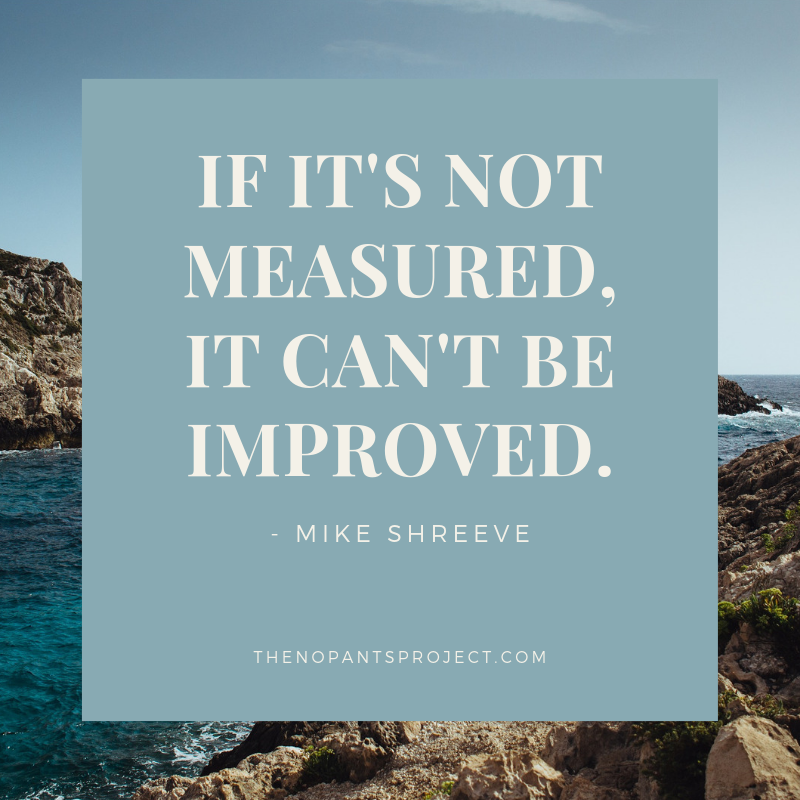
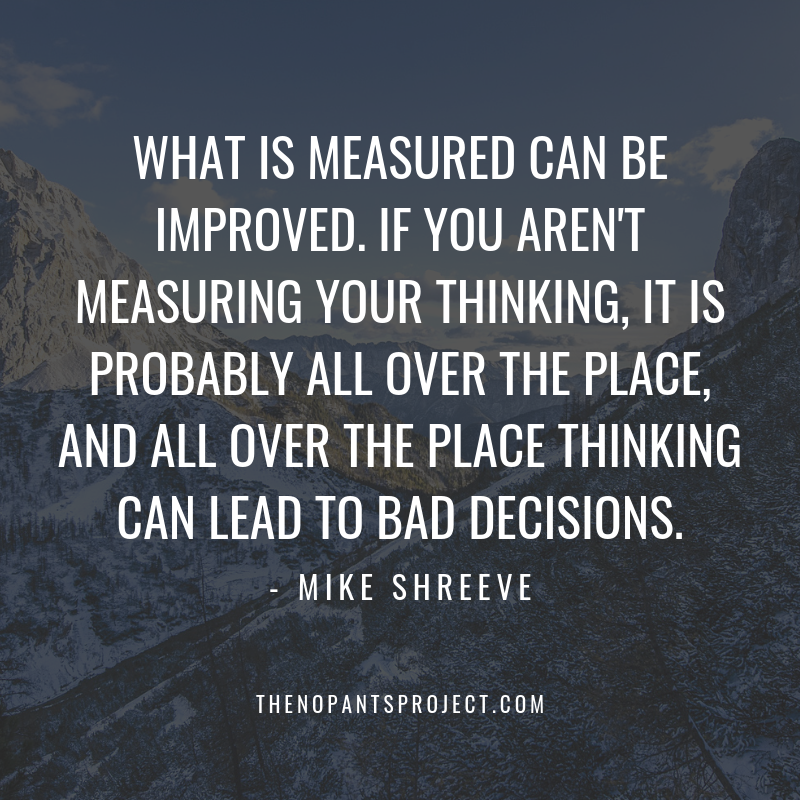

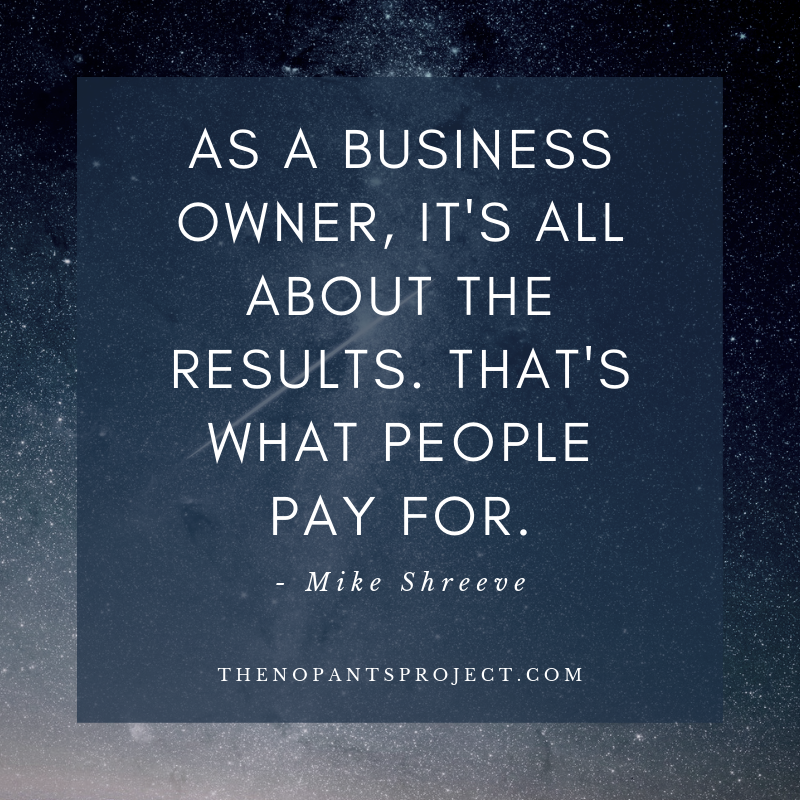
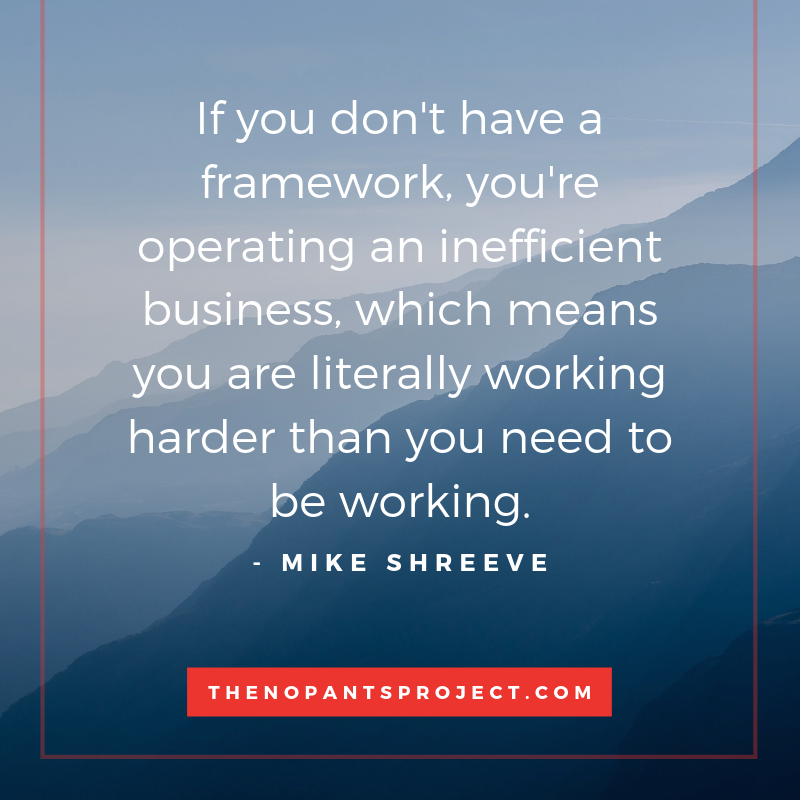
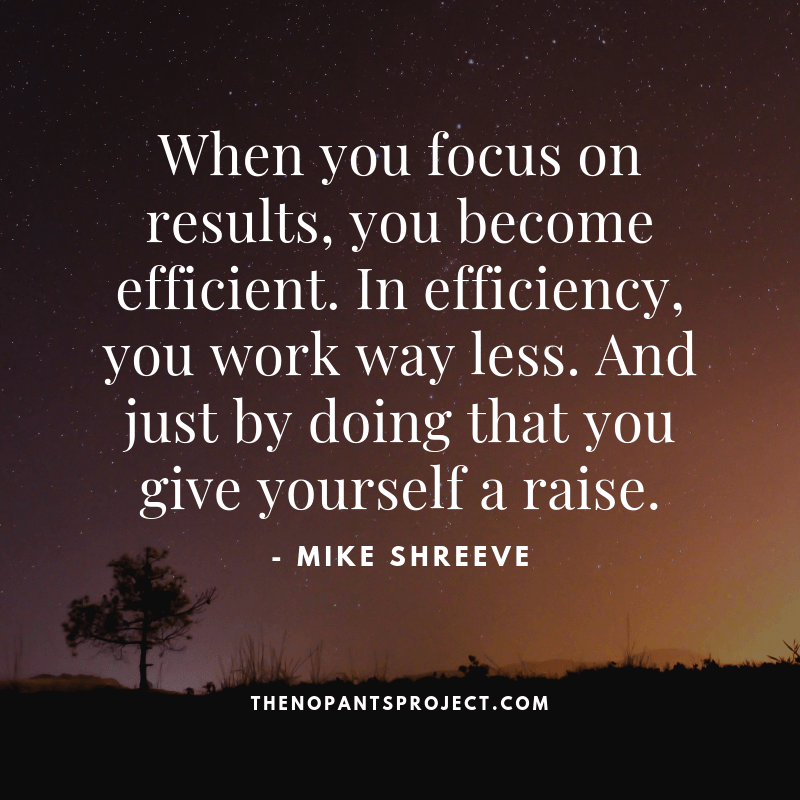
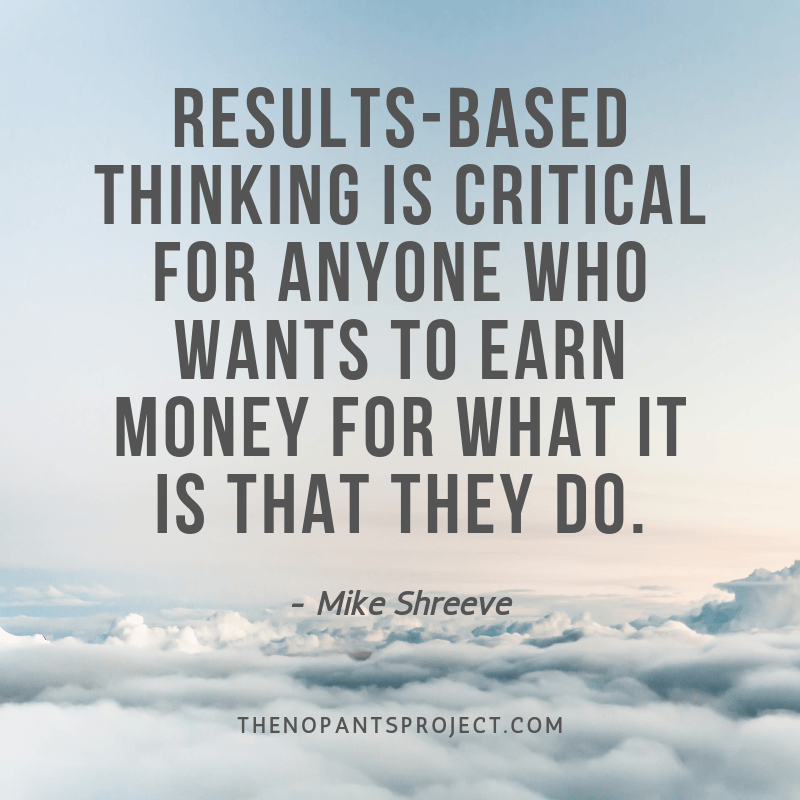
FULL TRANSCRIPT: 3 Ways To Give Yourself A Raise
Hey, everybody. Mike Shreeve here. How are you doing? Good evening to you today. I’m coming at you with a very important message that is all about how to increase what you earn without taking on more clients, without charging your clients more.
This is something that anyone can do to increase their fees, to increase what they earn per minute or hour worked without having to do any marketing whatsoever.
Now, I first discovered this process way back when I had multiple clients who were on six-figure retainers, meaning they’re paying $10,000 a month or more, and I was working myself to… It was bad. Health problems were happening.
There was a month in December, I think it was 2015, 2014 where I was only home eight days in December, and I was like traveling all over doing all this client work stuff.
Now, if you’re like Gary Vaynerchuk, and you want to buy the New York Jets football team, that’s the lifestyle that you should subscribe to, the hustle, hustle, hustle, work every waking minute, and try everything you can to make as much money as you possibly can, and et cetera. That’s fine if that’s your goal.
To be honest, I have nothing against that from a personal level. If that’s your cup of tea, awesome. However, for me, I want a very different lifestyle, so that’s more important to me is this different lifestyle. I am interested in what is the most I can get for the least amount of effort or the least amount of stress, right? That’s ultimately what I’m looking for.
So when I had this time in December where I was only home eight days, and for those of you who know, my birthday’s in December, Christmas is my favorite holiday. It’s in December.
December for me is like the month that I just focus on the stuff that I love. It’s not a month where I enjoy working with clients. I shut a lot of things down, but that December I was completely overworked and overbooked, and I just thought to myself, there’s got to be a different way.
So I went on this process, I discovered things like Perry Marshall’s 80/20 Sales and Marketing book, which led to Richard Koch and his whole entire 80/20 sales process, and all of these different concepts about not just productivity for productivity’s sake, but how can I maximize the time that I devote to a single thing without having to devote all of my time to that thing.
So what I want to teach you right now are:
Three Core Things That You Can Do To Give Yourself A Raise In Your Own Business
Again, without marketing, without doing all these sorts of things, and it comes from that process that I went through where I was doing multiple six figures per year as a freelancer working insane, crazy, way more than 60 hours a week, doing all the traveling, and then actually increasing my income by reducing my workload.
So now as a freelancer, I only work usually every other week for about 20 hours during that week. I still get a gradual increase a month over month on my freelancing business.
So this isn’t no pants, this is just what I do as a freelancer, as a service provider, as a creative person that helps grow businesses.
Concise Thinking
It all comes down to developing the habits of concise thinking. So one of the problems with how most people run their business, and I experienced this as I work with people at a high level in their business, but also as I work with people who are just starting their business, they approach business in a reactionary state, meaning they wake up, life hits them, they check their email, they check their phone first thing in the morning, and they react to the things that are happening to them instead of operating on a concise plan which has been measured and specifically designed to generate maximum impact, whether that’s financially or influential or whatever the goals are for your business on minimum inputs.
So concise thinking is how you give yourself a raise. Concise thinking to call it something else would be called extreme focus.
Now, let me give you an example of extreme focus.
Let’s say that you want to write blog posts and you know that we have The Happy Writer program, thenopantsproject.com/the-happy-writer. That’s only going to be available for the next couple of days.
In that program, we teach people how to make 200 and $400 per blog post and to run a business and be fully booked on just those, that blog post.
Now, the way that we help people get there, and one of the core concepts is you don’t have to all of a sudden write the kind of blog posts that is a hundred times better than what you were doing before. It’s more about controlling the structure and analyzing what are all the steps that’s required to create that blog post and picking out only the few that actually contribute to the end result that your client wants.
Let me give you just an example.
Clients, the good ones, don’t care how long it takes gets you to write a blog post. They don’t care. Meaning they don’t care if you spend five hours on it or that if you spend four hours on it, or if you spent one hour on it.
What they care about is
- Does it do the job that you’re being paid for?
- Does it get them traffic?
- Does it pre-sell?
- Does it allow for people to consume content, build brand, trust, all that kind of good stuff?
You can’t sit down and write a blog post and just be like, “I guess we’re just going to write something today, and whatever happens.” Having a framework, having templates, having an idea of the purpose of what you’re doing. that’s an example of concise thinking. I’m going to talk a little bit about templates for repeatable results here in a second. But the first step that you want to make towards that process is journaling.
Now you may think, “Gosh, shouldn’t I be working on my craft or writing or improving my skills rather than spending 10, 15, 20, 30 minutes a day journaling?”
This is one of my very first journals that I started back in January of 2014, and in this journal is literally mapped out my thinking.
So when I write my journal entries, I just sit down and I mean like they’re goofy, right? Like I draw these like silly pictures and I write what’s the problem that I have, what are some solutions that I have to it?
It’s not like I’m sitting down and forcing myself to somehow be smart on the page. I just let loose and I think on paper.
Now, the beauty of thinking on paper, and I do everything from, “I have a problem. Let me try and see if I can come up with a solution or here’s some ideas that I had. Here’s some of the random ideas about it.”
Maybe I’ll try to outline this way. Maybe I’ll try it to add this to my outlining process, whatever that might be. I draw pictures of sites that I want to build maybe. Literally anything that just I think for 15, 20, 30 solid minutes a day.
The reason that I do this is so that I can review my thinking, so that I can go back and review my thinking. As a matter of fact, last night, one of the… Let’s see if this is the right one. One of the things that I was doing last night is…Yeah, this is… Let’s see. I think this is the right one.
No, it’s not this one. I got a lot of journals. I don’t know if you can see, I’ve got a whole stack back there as well. One of the things that I did last night…
As I reviewed the past year, and you can see all these pages here… This is a little bit less than a year. I have another one that I was going through as well. And what I did is I just read literally probably 150 pages of my journal. And the reason that I did that is because about 30 days ago, I made a mistake in my business that was similar to mistakes I’d made many, many years ago.
So if you’ve ever experienced kind of like this moment where you do something and then you look at it like, “Why did I do that? I’ve already learned this lesson. I already made this mistake. Why am I making it again?”
Well, I did that about 30 days ago. I made a mistake that I, that I seem to make often, and I read through my journal and I found this repeating pattern in my thought process that led to this mistake that I made, the decisions I made, the conclusions I made.
So by analyzing my own thinking, I was able to come to some conclusions. And it’s not overnight snap your fingers and everything’s fine, but come to some conclusions that I know are going to improve the efficiency with which I solve that problem in the future.
So for example, imagine if you were to write… Let’s say, imagine that you were an artist and you painted things, and every time you painted something, you sat back and you thought through the process, why did I choose that color? Why did I go over here? Why did I make the line like this? What you would find is that a lot of the slough, a lot of the unnecessary worry, a lot of the confusion, a lot of the mistakes that you make by analyzing your own thinking through the process of a journal, because if it’s not measured, it can’t be improved and one way to measure your thoughts is by writing them down.
By running through the journal and making analysis on yourself, you’re able to trim a lot of the fat.
So those of you who are aware of meditation really of any kind, you know that a big part of meditation is learning and discovering that a lot of the thoughts that we have in our head are fairly random. Many of them don’t actually have meaning. A lot of them are a nonessential thoughts. They just pop up in our heads. They’re either triggered by emotions or something happens or it’s just a random thought pops out of our mind. We see something, a thought, an idea.
A lot of people accept every single thought that comes into their brain as critical, as important as the thought that must be pursued and followed et cetera.
By journaling, what you find is a lot of the things you worried about, a lot of the things you stressed about, a lot of the things that you thought were important, they ended up not being important. And just like the practice of meditation, what happens is you are able to find a sense of centeredness and being calm which allows you to be more efficient.
I wish I could remember the quote. But it’s basically this idea, consider all of the energy you’ve ever spent worrying about something that never happened.
And imagine if you had just not spent that energy on the thing that never happened, that you were stressed and worried that was going to happen. That’s extreme focus. That’s concise thinking.
That’s efficiency, which allows you to give yourself a raise without doing any additional marketing or even without charging your clients more because how much of the client work that you do right now is the stress of client work like, “Oh my gosh, are they going to like it? Oh my gosh, is this a… ” And like running around all these.
If you just were to let go of that, you would lose all of the things that you do to procrastinate because you’re worried. You could probably cut your working time in half just by getting rid of the stress and the worry because there’s so many negatives, secondary things that you do in reaction to worry, like procrastination, like going on YouTube or Facebook, and I’m researching, but really what you’re doing is delaying the fear that you have because of the worry and all that kind of stuff, right?
Journaling is the first step towards that self analysis.
Adjustment To Results
Now, the second thing is as you analyze your thinking, the adjustment to results based thinking is critical for anyone who wants to earn money for what it is that they do. And the reason is because what you end up getting paid for, regardless of what it is that you’re offering is the results you provide, not what takes up the most of your time.
So a lot of people, when they very first started business, they get confused because they’re still an employee mentality. Often times they’ll charge per hour, which I don’t recommend because then they’re still stuck in this employee mentality where I only make money in as much as I spend time doing something. Literally incentivizing myself to take longer to do so something in a per hour model.
And what happens is there is a confusion about what the client actually wants from you. That happens when you’re stuck in employee mentality, which is I get paid because I’m here. Not I get paid because of what I deliver. When you make the adjustment from I get paid because I show up to, I only get paid to what I deliver, you suddenly realize it’s like putting on rose colored glasses or seeing the matrix for the first time, the list of things that you do that don’t contribute to the end result.
So for example, in The Happy Writer… So I’m actually going to go and pop this up now. I think we’ve got this here. The Happy Writer is a program that we’re selling. It’s going to close forever by February 1st for those of you who are interested in wanting to learn how to be efficient blog post writers so that you can earn 200 to $400 per blog posts.
What we do in that program is we focus on the results. We strip away all of the unnecessary aspects of what it takes to go from client hired me to I’m delivering client results, and what you’ll find is that… It’s very backwards thing and if you’re stuck in employee mentality, this is a hard concept to grasp, but efficiency really, truly does mean less work.
See, the problem with most people these days is that they’re preaching productivity. The problem with productivity is that productivity is about cramming as much as you can in as little time as possible.
Efficiency is about finding what is the minimum viable input that is required to get the desired output.
That in my opinion is a way better form of living rather than what’s the most I can cram into a single day until I’m like passed out on the couch from total exhaustion.
And science suggests that that kind of lifestyle isn’t healthy on so many different levels.
Where’s the book that I’m reading right now? It’s called Why We Sleep. I highly recommended.
Sorry, I don’t have it here with me. Hold on a second. Well, anyways, Why We Sleep, very good book. Just another tack another win for science on why you need to not be grinding yourself to death.
Efficiency. Well let me actually speak about that for a second because it’s really frightening. First, chapter of the book, Why We Sleep, they talk about if you just lose like an hour or two of sleep a night on a consistent basis, an hour or two, from what sort of your minimum threshold is, you double your risk of heart disease. You double your risk of cancer.
So all these people out there that are saying, stay up, until 4:00 in the morning and grind until you… They are giving you horrible advice, so be careful. The science is in, right?
There’s a lot of things that are negative outcomes to that sort of approach and lifestyle.
Now, efficiency. When you move to just focusing on what’s the results and you remove all of this other sort of superfluous worries and concerns and things I’m doing over here, and does my logo look perfect and does this over here look, da, da, da, da.
And when you focus on results, you become efficient. Inefficiency, you work way less. And just by doing that you give yourself a raise.
Templates
Now, the third thing I want to share something here with you. See if I can figure out my cool little toy that I have. Let’s see. It should come up here. Perfect. Okay.
This is the third thing I want to talk about which are templates. Now, a lot of people I think confuse the meaning template. And I’ve been a professional writer now for 10 years.
In The Happy Writer program, we give you, this is one of the many versions of templates that we give you with explainer videos and all kinds of cool stuff. Good examples, bad examples. A template is not the right word I think in what has become the meaning of template.
I think a better word for template is framework.
A framework is a mental exercise that you follow that every time you follow that mental exercise, you end up with the result that you’re looking for.
So for example, here, let’s see if I can move this over here, in Happy Writer, here’s just a couple of the templates that we have where we run you through a series of mental exercises. It takes 10 to 15 minutes, which will allow you to outline an entire long forum blog posts, which clients will absolutely pay 200 to $400 for.
We had a student take this program within two and a half weeks. He was charging $500 per blog post. I’ve been paid up to a thousand dollars myself following these same frameworks where you just go through and you ask yourself certain questions, and you run through this mental exercise through a variety of different posts styles.
And the reason that you run through these exercises is because you’re looking for the minimum viable, the most efficient way to deliver the result that the client is looking for. That’s why they continue to pay you 200 to $400 a blog post.
They aren’t paying you because they like you.
They aren’t paying you because they like the words you wrote.
They’re paying you because what you wrote gave them the result that they were looking for.
And this isn’t just for blog posts. I know a lot of us in The No Pants Project have no desire to write, we have no desire to write blog posts. Maybe we want to be covering me, we want designers, photographers, whatever. The same principle applies to everything that you do.
So if you are a photographer, for example, if you don’t have a framework, which is every time I want the perfect head shot, I need to go through this mental exercise. You call it a mental checklist, whatever you want to call it.
I go through this very specific process that I know at the end of that process I deliver the result that my client is looking for. If you don’t have that, you’re operating inefficient business, which means you are literally working harder than you need to be working.
Now, some of you are going to say, wow, this sounds really boring to just go through the same thing over and over again. Again, I think template gets a bad rap.
A framework is a tool to spark creativity. So for those of you who are afraid of the blank page, what you need is a framework because the framework is the mental exercise that you go through, question, question, question, question. Got it.
I know exactly what I’m going to write. I know who it’s for, I know what this should say, and here we go. And I’m going to have some fun. And I’m going to fill it in, and I’m going to play with them. There’s the saying that says creativity loves constraints.
Let me run a sort of mental exercise with you. Open up a blank piece of paper and write me 500 words. Let’s try that right now. Write me 500 words. What’s the initial reaction about what? What’s the purpose of the 500 words? Where’s it going?
Our brain is naturally built to take constraints and to turn it into something beautiful. And the same example, take out a piece of paper. Write me 500 words on the best food you’ve ever eaten. Now, you’re like, “Oh, I could do that.” da, da, da, da, da, da, da. Way easier than just blankness.
A lot of writers are running a writing business with no framework in place and a blog post that could have taken them two hours is taking them three days. They turn into the client. The client is like, “What is this? This isn’t even geared toward the result that I’m looking for.” And that’s where the struggle happens.
And this happens across all creative professionals. The good creatives, the ones that operate at a high level that are in high fees, they have frameworks set out for what it is that they’re doing because concise thinking works.
So if you’re looking for ways to give yourself a raise, you don’t have to increase your marketing, you don’t have to even change your pricing model, if you’re just looking for how can I make more money for the time I put into this business, it’s about concise thinking.
It’s about extreme focus. It’s about stripping away all the unnecessary diddle-daddles, and then going over here, and doing all this stuff that is unnecessary.
Now, I know some of you, the hardcore creatives who preach the gospel of creativity are going to say, “But Mike, the diddle-daddles and the going here and there is productive to my creativity.”
I’m not arguing against that. But I think that there’s a case for sitting and worrying, about what the client wants you do, and how am I going to deliver the result. And are they going to like this or not. And is what I’m writing all the self doubt, all the worry, all the stress, all the procrastination that you’re doing because you don’t know which direction to go?
That’s the stuff I’m talking about getting rid of. If you need to go on a walk and stare into space and let your mind water within the confines of the constraints you set on your creative project, that’s a healthy creative habit.
That’s how things are made, but sitting there and stressing and worrying, I don’t know this, how is this going to work? What’s this supposed to look like? That is unnecessary.
If you’re a blog post writer, all you need to get is The Happy Writer program. There’s a link somewhere around here, The Happy Writer, I think thenopantsproject.com/the-happy- writer.
We can supply you with proven frameworks that our students consistently use and they’re consistently charging a minimum of $200 per blog post. We have several who are doing 500 and more, 300. The range is above 200. And they are able to consistently get those fees because they have the framework that I developed, that I’ve gathered from other people’s frameworks, from investing in their training and investing in their mentorship, and I’ve combined and sort of created my own frameworks, and here’s the exercise that I go through before I create my work or content or whatever it is for your client.
You can get these frameworks, these templates plus a bunch of other training including how to choose your niche and what to put in your portfolio, and how to build it, and how to build that, and how to get clients, where to get them, what they want to hear the script to close them.
Plus we have some other additional bonus training on what happens if you don’t want to write anymore, you just want to like be in charge of a team of writers and have them go through your frameworks. All that’s included in this program.
So if you’ve been thinking about The Happy Writer, it’s important that you know February 1st it’s over. We will never sell this again, and not because it’s not a good program, it’s because it’s so good that we’re actually putting it into something called The Triple Point Program, which when we sell The Triple Point Program, the pricing on that starts at 4,000. We’re certainly not charging you $4,000 for Happy Writer. So this isn’t like fake scarcity or anything like that.
So if you’re thinking about The Happy Writer, ask yourself, are you trying to run a more productive business where you put in longer hours and you hustle, and your grind, you do these things? Or are you looking for a more efficient business where your goal is to maximize outputs for yourself and your clients with a minimum input?
If that is the kind of business that you’re interested in, I highly recommend The Happy Writer even if you don’t necessarily think writing is a main core component to your business because you can also use The Happy Writer for content creation for yourself to make a live video like this to attract clients, to post on LinkedIn to attract clients, to create Facebook posts for other clients.
The beauty of a framework is that a framework, and this is why concise thinking is so powerful, concise thinking doesn’t worry about what platform am I using.
Concise thinking says what’s the point of posting on a platform? What’s the point of communicating to a client? Let me do that and then I can put it in whatever platform.
If LinkedIn dies tomorrow, if Facebook dies tomorrow, if nobody watches video, if nobody reads anymore, I can still take that same framework, the same concise, what’s the point of this thing I’m trying to do, and I can move it and adjust it to whatever changes happen around you.
So my friends, The Happy Writer is program that’s available to you.
Recap
Again, the three things that lead to concise thinking which allow you to give yourself a raise.
- First off, the journals, what is measured can be improved. If you aren’t measuring your thinking, your thinking is probably all over the place, and all over the place thinking can lead to bad decisions. It can lead to unnecessary stress. There’s a lot of things that just randomize thinking can lead to. Analyze your thought process. See if you can get rid of some of the thought habits that have led to choices or situations or events that you didn’t, you didn’t enjoy. Let’s put it that way.
- Number two, results based thinking. So moving from how much time am I spending in my business to what are the results of my business? And really narrowing down and say, “That’s the only thing that matters.” How much time I spend, that’s employee mindset. As a business owner, as somebody who’s building their own business, it’s all about what are the results. That’s what people pay for.
So the journaling is a beautiful tool to track what it is that you’re trying to do.
Check everybody out.
Explore, keep an open mind.
Again, thenopantsproject.com/the-happy-writer is where you can pick up the program that we are closing to the public as of February 1st otherwise we are going to be dropping it into our Triple Point Program, and it will be much more expensive, but still equally as awesome as it is right now, and equally as results getting.
So, again, have an awesome, wonderful rest of your evening and I’ll see all tomorrow.
